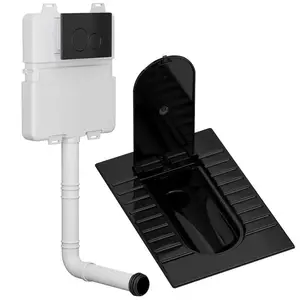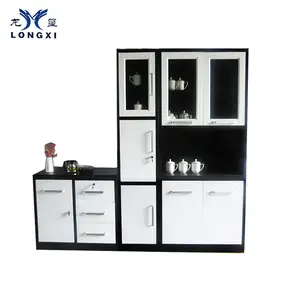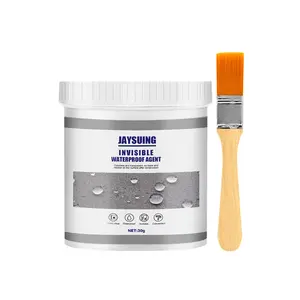Popular in your industry


























Top categories
About how to install toilet wax ring
Introduction
DIY home improvement skills can save you both time and money. One such skill is the installation of a toilet wax ring, an essential yet often overlooked component that ensures a leak-free and odor-free bathroom. This guide will walk you through the importance of a toilet wax ring, the necessary tools and materials, the installation process, and tips for a successful outcome. This guide is suitable for both seasoned DIY enthusiasts and novice homeowners.
Understanding the Importance of a Toilet Wax Ring
A toilet wax ring is a vital component that seals the connection between the toilet and the closet flange on the floor. It prevents leaks from the bottom of the toilet and provides an odor-proof seal. These rings are durable and relatively simple to install. Signs that you may need to replace your toilet wax ring include a rocking toilet, leakage around the base, or a sewer gas smell in your bathroom. Wax rings are an inexpensive, yet essential part of installing a leak-free toilet.
Tools and Materials Needed
Replacing a toilet wax ring requires a few essential tools and materials. These include a bucket, sponge or towels, adjustable wrench, pliers, and a putty knife. You'll also need a new wax ring seal, toilet mounting bolts, and possibly repair parts or spacers. If you're considering replacing the toilet supply when replacing the wax seal, you'll need a new water supply tube. Lastly, don't forget a pair of disposable gloves for hygiene and a protective covering for your bathroom floor.
Preparation Steps
Before starting the installation, check the flange height and secure the closet bolts. If you're using a toilet flange extender, bolt the extender to the original flange. Be cautious when tightening the washers and nuts against the toilet base; they should be snug but not overly tight to avoid cracking the toilet.
Removing the Old Wax Ring
First, rock the toilet gently to break the seal. Lift the toilet off the floor and set it aside. Wearing disposable gloves, remove and discard the old wax ring. Use a putty knife to scrape off the old wax seal from the base of the toilet and the toilet flange. Inspect the toilet flange for any cracks or decay. After removing the old wax ring, plug the drain immediately to prevent sewer gas from entering your home.
Cleaning the Flange
After removing the toilet, clean the toilet flange. Put on rubber gloves and remove any residue left behind from the old toilet flange so the new toilet will seat properly. Cleaning the floor under the toilet is also recommended.
Installing the New Wax Ring
Ensure the toilet flange is clean and free of old wax. If you're installing new bolts, do so now, ensuring they're centered with the flange opening. Place the new wax seal on the flange, making sure it's centered. Carefully re-install the toilet, using the bolts as a guide. The toilet should be level and the tank parallel to the wall. Avoid rocking the toilet as you seat it onto the new wax seal. Once the toilet bowl is resting on the floor, install washers and bolts, tightening them carefully to avoid damaging the toilet or floor.
Positioning the Wax Ring
Place the new wax ring on top of the toilet flange, ensuring it is centered. This step is crucial as it ensures a proper seal, preventing leaks. Make sure the toilet is as level as possible when placing it onto the new wax seal. The toilet tank should be parallel to the wall behind it. Avoid rocking the toilet as you seat it onto the new wax seal. Instead, use a slight side to side twisting motion until the toilet bowl is resting on the finish bathroom floor.
Securing the Toilet Bowl
Start by checking the flange height and securing the closet bolts. If you're using a toilet flange extender, bolt the extender to the original flange. Then, place the wax ring and the toilet. Be careful when tightening the washers and nuts against the toilet base; they should be snug but not overly tight, which can crack the toilet. Lastly, caulk the base for a neat finish.
Testing the Installation
After installing the new wax ring and repositioning the toilet, test the installation. Sit on the toilet and shift your weight around a bit to ensure a tight seal. If the toilet remains stable and does not wobble or rock, your wax ring toilet seal may be fine. Also, check for any signs of leaks around the base of the toilet. If you do not regularly see moisture or puddling water under your toilet, your installation was successful. Remember, leaks can happen where you do not see them, so look for spongy spots on the floor or loose tiles that pull up.
Tips and Tricks for a Successful Installation
Ensure the toilet is level when placing it onto the seal. Avoid rocking the toilet as this can compromise the seal. Tighten the bolts evenly from side to side until the toilet is firm. Over-tightening can damage the toilet bowl. After installation, test for leaks by flushing several times and checking for water around the base. If leaks are detected, you'll need to reinstall with a new wax seal. Lastly, seal the toilet bowl to the floor with caulk, leaving a small observation opening at the back for leak detection.
Conclusion
Installing a toilet wax ring is a manageable DIY task that requires careful attention to detail. Each step, from understanding the importance of a wax ring, gathering the right tools and materials, following the step-by-step process, and finally testing the installation, is crucial to ensure a successful outcome. With these tips and tricks, you're now well-equipped to tackle this task, ensuring a leak-free, odor-free bathroom, and saving you potential repair costs in the future.




























